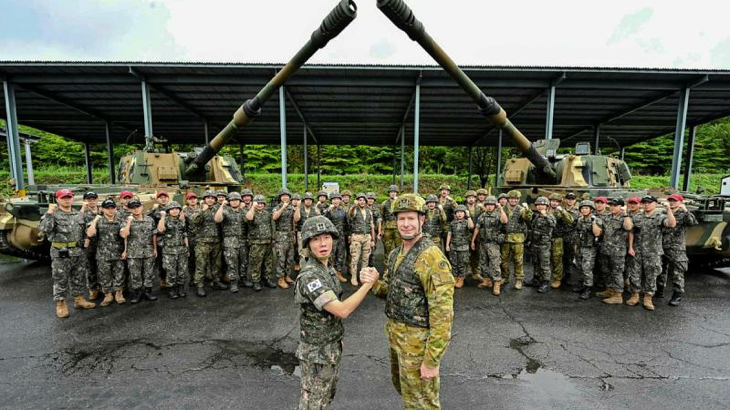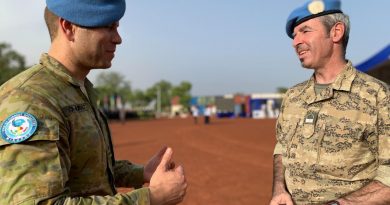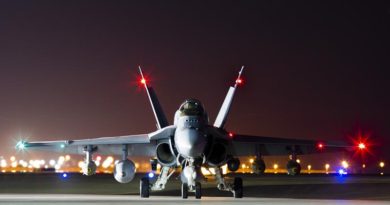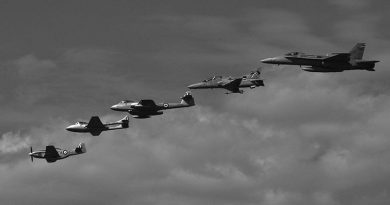Gunners come to grips with new howitzer

When Lance Bombadier Lachlan Kirk fired a K9 self-propelled howitzer for the first time, he realised the shock didn’t compare to an M777.
CAPTION: Australian Army and Republic of Korea soldiers on a familiarisation training course for the K9 self-propelled howitzer and the K10 armoured ammunition resupply vehicle in South Korea. Story by Corporal Luke Bellman.
“The recoil was good, it’s not as full-on as the M777,” he said.
Lance Bombadier Kirk was one of nine Aussie gunners on familiarisation training in South Korea to become future instructors on the vehicle.
This included each of them blasting 155mm rounds from the K9 for the first time.
Because the K9 has an automatic laying system, Lance Bombadier Kirk said it was as simple as reviewing the fire control system data, laying the gun, and pressing a button to fire it.
“The main gunner has a screen in front of them where they review the firing solution provided by the fire direction centre. They then press a button to operate and lay the gun,” he said.
The self-propelled howitzer also has manual mode with a hand wheel and levelling bubbles, similar to the M777 – and a semi-automatic mode with a joystick for directional adjustments or direct fire.
They also learnt how to perform a lot of operator maintenance, such as removing the muzzle and tracks for repairs.
Lance Bombadier Kirk said it was easier to load the K9 with the K10 armoured ammunition resupply vehicle, without having to manually move the ammunition by hand.
“The K10 is loaded with 104 rounds and connects with the rear of the K9. A conveyor belt feeds rounds from the K10 to the K9,” he said.
These rounds are then automatically racked inside the K9, reloading the vehicle in 20 minutes.
Sergeant Jake Brown, who has been an instructor on the M777, said the main difference was being able to shoot and move quickly.
If moving, the K9 can stop and fire within 60 seconds, or if stationary, 30 seconds.
“It will be able to fire rounds and move from that position immediately so you don’t receive counter-battery fire,” Sergeant Brown said.
He said the most beneficial part of the course was driver training. Tactically manoeuvring a 50-tonne armoured vehicle is something the gunners have not needed to do with the M777.
“Driving tracked vehicles is going to be new to everybody who’s coming through, and getting qualified on the system,” he said.
Towards the end of next year, there will be a more in-depth, train-the-trainer course for potential instructors so they can teach trainees from the 4th Regiment, Royal Australian Artillery (4 Regt, RAA) at Puckapunyal.
The Australian AS9 Huntsman and AS10, which are based on the Korean K9 and K10, will have increased internal height, modernised direct fire and fire control systems, additional storage, and air conditioning.
Thirty AS9s and 15 AS10s are expected to be in service in the Army by 2028 and will be primarily operated by 4 Regt, RAA in Townsville.
.
.

.
.





